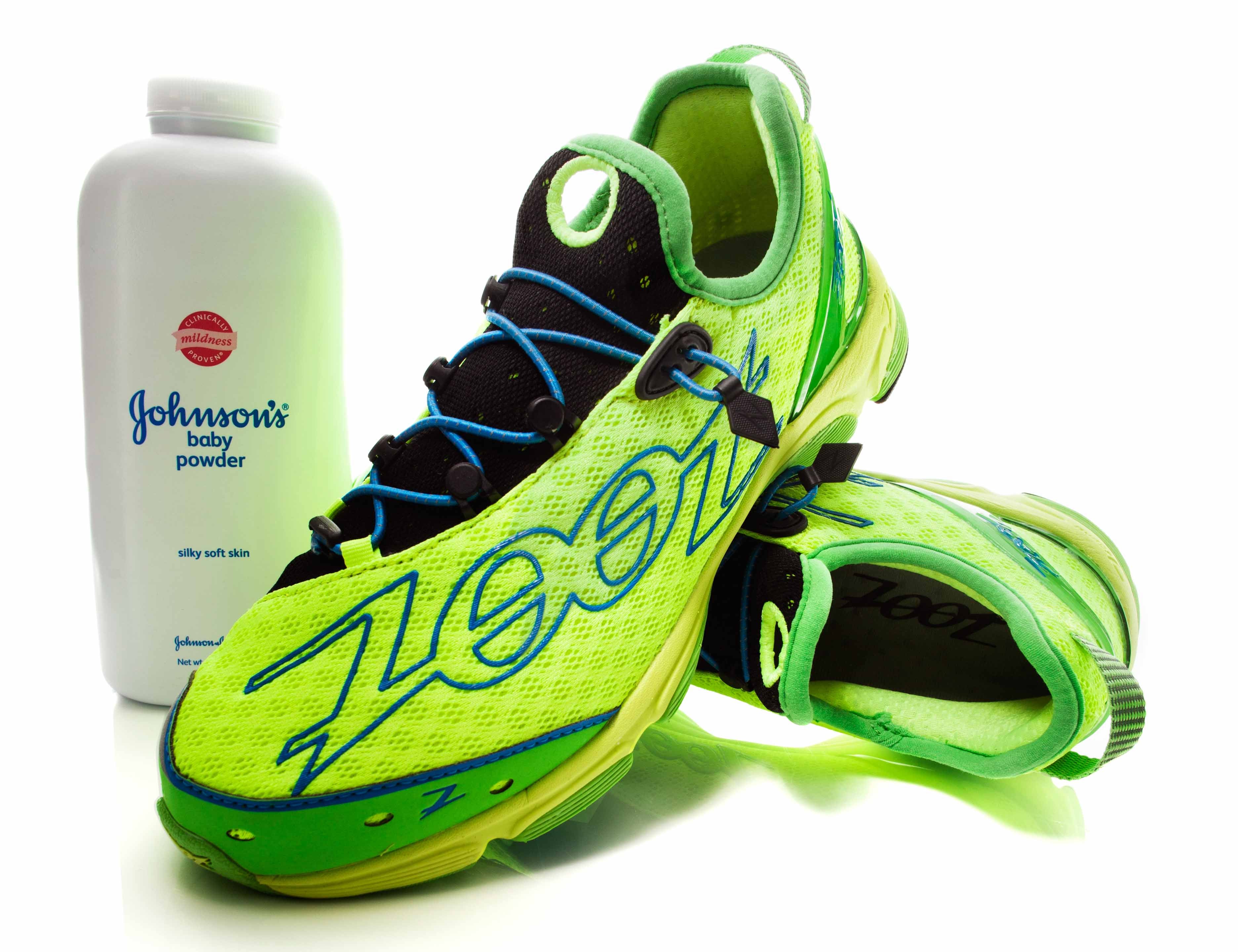Fast Footwork: Improve Your T2 Speed

Photo: John David Becker
Transition faster by making these two simple changes to your short-course T2 strategy.
Race sockless
Sliding socks over wet feet amid the chaos of transition takes time—more than you may expect. Going sockless can help get you onto the run course faster, but if race day is your first run without socks, the outcome will be predictable. You’ll need to build a tolerance in order to run comfortably without the protection of a sock.
Step 1: Acclimate to your race shoes
Every shoe has slightly different pressure points, so regularly running in your race shoes will help your feet adapt. If you use the same pair for every workout, this step will be easy. If you have a special pair for race day, work them into your training schedule at least eight weeks out from race day.
Step 2: Experiment with sockless running
Start by running a 10-minute cool-down once a week in your race shoes without socks. Dust a little baby powder in the shoes to help keep them dry and reduce rubbing.
Step 3: Extend the distance
Lengthen your weekly sockless run in your race shoes, but limit it to 20–30 minutes. Even after your skin has started to harden, longer runs without socks are still likely to cause discomfort and possibly skin damage so don’t push the distance. Skip the last sockless run so your feet have two weeks to heal fully before race day.
RELATED: Starter Guide To Going Sockless
Quick-laces
Forget tying your shoes with the rabbit-ears method—quick-closing laces are one of the cheapest and easiest ways to shave transition time. There are three major types of tri-friendly shoe closures and they all avoid knot-tying.
Tri-specific shoe:
Zoot Ultra TT 7.0
$120, Zootsports.com
Lace setup: None
Transition: Forcefully yank the top and bottom of the foot opening apart and slide in. Pull the laces for a little extra tension.
Feel: The laces press down subtly on the foot and the tight upper exerts a little additional pressure. The Ultra TT 7.0 does not seem to stretch while running, unlike many standard shoes with elastic laces.
Static laces:
Race Runners Non-Stretch Laces and Zero Friction Fittings
$12, Speedlaces.com
Lace setup: Screw the plastic bits into the eyelets of a shoe and thread the nylon lace through the openings from the bottom up.
Transition: With the laces all the way loose, slide into the shoe and pull the plastic pincher down against the foot.
Feel: Grip on the foot doesn’t suffer at all—they provide the same firm hold as a standard lace without any unwanted pressure.
Elastic Laces:
Lock Laces Elastic Shoelace and Fastening System
$8, Locklaces.com
Lace setup: Rethread the elastic lace in place of the standard one from the top to the bottom with the plastic slider at the top of the shoe.
Transition: Starting with the plastic pincher at the end of the lace, slide into the shoe then secure it shut by drawing the lace through the pincher.
Feel: The elastic laces gently squeeze the foot constantly and allow a little extra movement in the shoe when pushing off the ground, which some runners don’t mind while others dislike.
RELATED – 2014 Triathlete Buyer’s Guide: Beginner Run Essentials